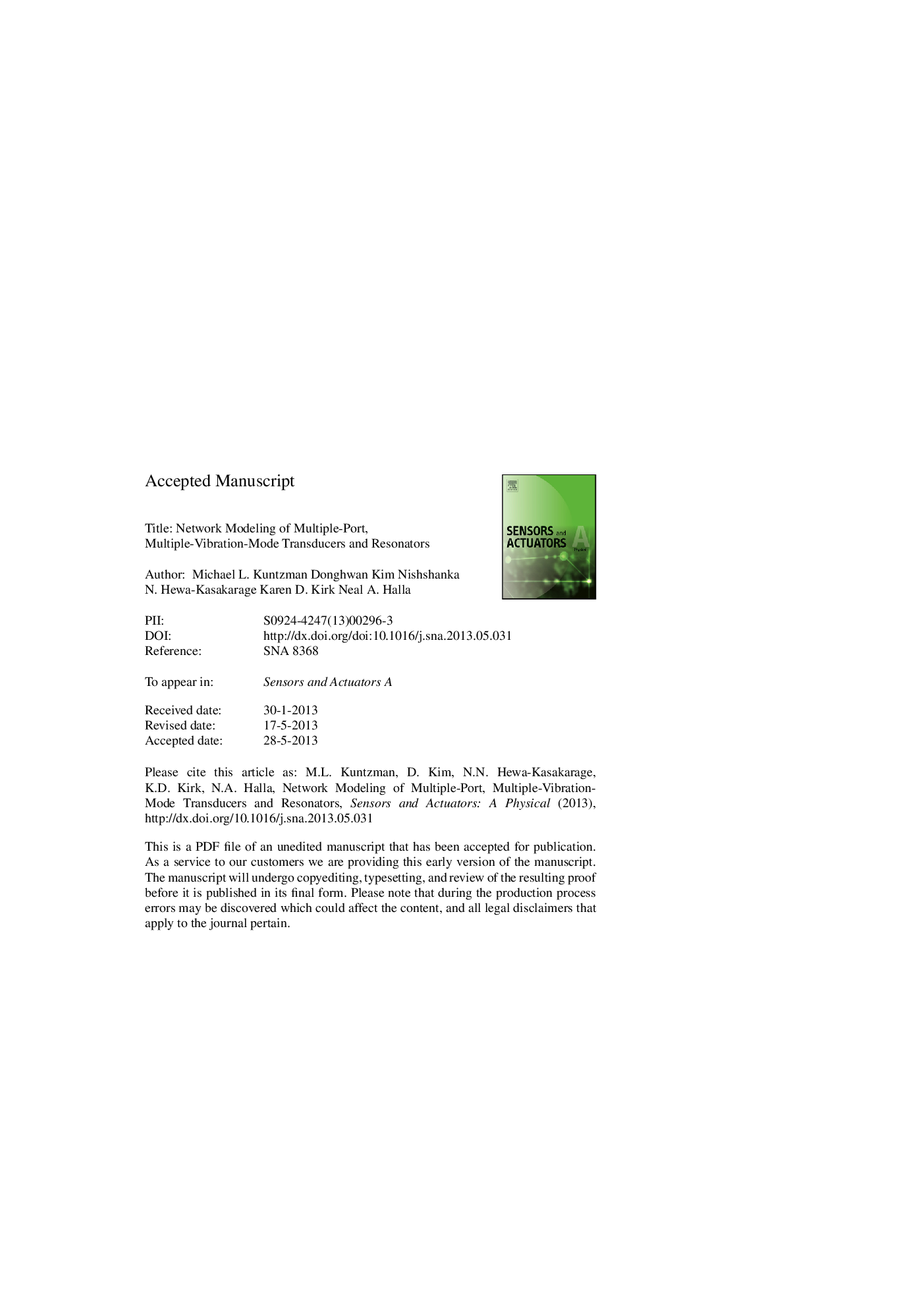| Article ID | Journal | Published Year | Pages | File Type |
|---|---|---|---|---|
| 7137599 | Sensors and Actuators A: Physical | 2013 | 27 Pages |
Abstract
A modeling procedure is presented for multiple-port, multiple-vibration-mode transducers. Unique features of the procedure include the use of modal coordinates to describe deformations of the mechanical structure, the use of a network analog for each vibration mode of the structure, and the selection of modal velocity, rather than a particular physical velocity on the structure, as the mechanical flow variable in each modal network. Finite element analysis is used only to compute a discrete set of salient circuit parameters, with all other analysis and design computations performed using the networks. The approach is computationally efficient and assists with providing insights into the design of actuators and micromechanical resonators, where the generation and suppression of particular vibration modes may be important. A micromachined, multiple-port piezoelectric microphone with in-plane directivity is presented as a case study to demonstrate application of the procedure. Model verification is performed by comparing simulated and measured port-to-port transfer functions over a frequency range spanning several vibration modes of the device. The modeling procedure can address multiple-port sensor response to distributed loadings, selective excitation and suppression of modes in actuator applications, and mixed sensing and actuator applications such as the demonstrated port-to-port measurements.
Related Topics
Physical Sciences and Engineering
Chemistry
Electrochemistry
Authors
Michael L. Kuntzman, Donghwan Kim, Nishshanka N. Hewa-Kasakarage, Karen D. Kirk, Neal A. Hall,
